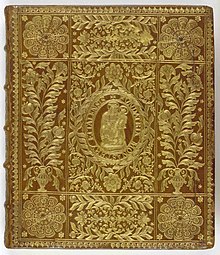Julius Capitolinus

Cover of a 1698 edition of the Historia Augusta from Ettal Abbey
|
|
| Author | Disputed |
|---|---|
| Original title | Historia Augusta |
| Language | Latin |
| Subject | Roman history |
|
Publication date
|
Disputed, possibly 4th century |
| LC Class | DE |
The Augustan History (Latin: Historia Augusta) is a late Roman collection of biographies, written in Latin, of the Roman Emperors, their junior colleagues, designated heirs and usurpers of the period 117 to 284. Supposedly modeled on the similar work of Suetonius, The Twelve Caesars, it presents itself as a compilation of works by six different authors (collectively known as the Scriptores Historiae Augustae), written during the reigns of Diocletian and Constantine I and addressed to those emperors or other important personages in Rome. The collection, as extant, comprises thirty biographies, most of which contain the life of a single emperor, while some include a group of two or more, grouped together merely because these emperors were either similar or contemporaneous.
However, the true authorship of the work, its actual date, and its purpose, have long been matters for controversy amongst historians and scholars, ever since Hermann Dessau in 1889 rejected both the date and the authorship as stated within the manuscript. Major problems include the nature of the sources it used, and how much of the content is pure fiction. For instance, the collection contains in all about 150 alleged documents, including 68 letters, 60 speeches and proposals to the people or the senate, and 20 senatorial decrees and acclamations. Virtually all of these are now considered to be fraudulent.
By the second decade of the 21st century, the overall consensus supported the position that there was only a single author who was writing either at the end of the 4th century or the beginning of the 5th century, and who was interested in blending contemporary issues (political, religious and social) into the lives of the 3rd century emperors. Further, that the author used the fictitious elements in the work to highlight references to other published works, such as to Cicero and Ammianus Marcellinus in a complex allegorical game. Despite these conundrums, it is the only continuous account in Latin for much of its period and is thus continually being re-evaluated, since modern historians are unwilling to abandon it as a unique source of possible information, despite its obvious untrustworthiness on many levels.
...
Wikipedia
